UPES | BBA Admissions 2026
#36 in NIRF, NAAC ‘A’ Grade | 100% Placement, up to 30% meritorious scholarships
Helping the candidates to simulate exam-like conditions, aiding them in understanding their strengths and weaknesses, and allowing them to enhance their time management skills, the SPJAT MBA exam mock tests offer the candidates a wide range of advantages. While practising through mock tests is a really effective preparation methodology for any exam, it is more helpful for the SPJAT MBA exam because it follows a slightly different examination pattern. Let us deep dive into the importance of the SPJAT MBA mock tests during the candidate’s SPJAT exam preparation journey and the common mistakes to avoid during the preparation through the contents of this article of Careers360.
This Story also Contains
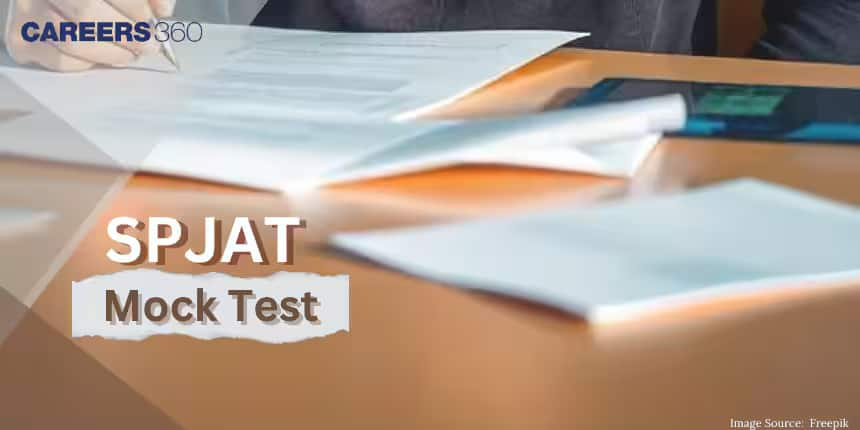
The SPJAT MBA exam is conducted by the SP Jain School of Management for the various admissions to their management postgraduate degree programmes. While the SP Jain School of Management accepts the marks of various other exams such as XAT, CAT and GMAT, the candidates are advised to focus more on the SPJAT MBA if they wish for admission at this popular college because SPJAT MBA is a comparatively easier exam out of the rest. There are five different sections in the SPJAT MBA exam namely, Diagrammatic Reasoning, Logic, IQ, Numeracy and Reading Comprehension. A total of 34 questions are asked to the candidates and the maximum marks of the SPJAT MBA exam is 100. The detailed SPJAT MBA exam exam pattern anf SPJAT marking scheme is given below:
Name of the Sections | Number of Questions | Marks per Each Question | Total |
Diagrammatic Reasoning | 7 | 3 | 21 |
Logic | 6 | 2 | 12 |
IQ | 6 | 2 | 12 |
Numeracy | 10 | 4 | 40 |
Reading Comprehension | 5 | 3 | 15 |
Total | 34 | 100 |
The Role of Mock Tests in SPJAT Preparation cannot be overlooked. This is because the mock tests are essential for the candidate's preparation and they must be incorporated into tye SPJAT MBA exam preparation of the candidates. They offer the candidates a lot of merits and some of the highlights of attempting the SPJAT Mock Tests are discussed below:
A thorough understanding of the SPJAT MBA exam pattern lays the foundation for effective SPJAT MBA exam preparation. As the SPJAT mock tests are designed to closely mirror the SPJAT exam, practising them can give the candidates a deeper understanding of the SPJAT MBA exam pattern. Using this, the candidates can structure their SPJAT MBA exam preparation well and also understand the various key topics that should be prioritised during their SPJAT MBA preparation.
A common misconception is that the mock tests should only taken after the candidates complete the SPJAT exam syllabus but this is not always right. The candidates should take weekly mock tests based on their preparation levels and assess themselves during that time. This helps them to understand their standing and the possible alterations that they must make in order to effectively write the SPJAT MBA exam.
Now let us discuss a few practical benefits of taking the SPJAT mock tests and how the candidates.
Taking SPJAT mock tests regularly can significantly help in reducing exam anxiety. By repeatedly exposing yourself to the exam format, you become more familiar with the types of questions and the time constraints, which builds your confidence. This familiarity helps ease the nervousness that comes with uncertainty, making you feel more prepared and less anxious on the actual exam day.
Mock tests are also valuable for developing and refining problem-solving strategies. As you practice, you’ll learn which techniques work best for different sections of the exam, such as analytical reasoning or verbal ability. By experimenting with various approaches, you can discover time-saving strategies and methods that enhance your accuracy, allowing you to improve your performance in each section.
Careers360 has designed a comprehensive SPJAT MBA exam mock test for the overall preparation of the candidates. This mock test is prepared after careful analysis of the official SPJAT MBA sample papers and the solutions to the questions are written by respective subject matter experts. The candidates are requested to download the SPJAT MBA mock test designed by Careers30 and enhance their SPJAT MBA preparation.
TITLE | DOWNLOAD LINK |
SPJAT MBA Mock Test Ebook |
Some of the sample questions from the mock tests are given below for the reference of the candidates.
1. Direction: Find the missing figure of the series from the given responses.
Question Figures:

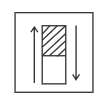



2. Directions: Select the option figure in which the given figure (X) is embedded (rotation is not allowed).
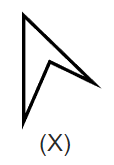
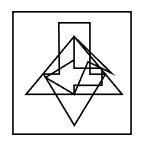
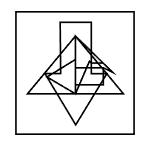
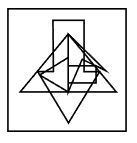
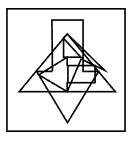
3. Directions: Select the option in which the given figure is embedded (rotation is not allowed).

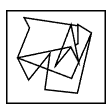
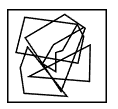
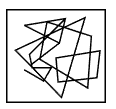
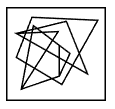
NAAC A++ Accredited| Ranked #24 in University Category by NIRF
Approved by AICTE & UGC | QS I-Gauge Gold-rated University | Scholarships available for Meritorious students | Application Deadline: 28th Feb’26
4. Directions: Each of A, B, C, D, E, F and G has an exam on a different day of the week starting on Monday and ending on Sunday of the same week. A has an exam on Wednesday. Only one person has an exam between A and B. D has an exam on the day immediately before B. Only one person has an exam between F and B. G’s exam is on one of the days before A but on one of the days after C. On which day does G have an exam?
Friday
Tuesday
Monday
Wednesday
5. Directions: A question is given, followed by two statements numbered (I) and (II). You have to decide whether the data provided in the statements is sufficient to answer the question. Read both the statements and select the appropriate answer.
Question: Six people sit in two parallel rows. In Row 1 - J, K and L sit facing north, and in Row 2 - F, G and H sit facing towards south. Each person in a row faces a person in the other row. Who faces G?
Statements:
(I) H faces K; L faces an immediate neighbour of H.
(II) G sits at one of the extreme ends of the row; J sits to the immediate left of L.
Data in statements I and II together is sufficient to answer the question
Data in statement II alone is sufficient to answer the question while data in statement I is not
Data in statement I alone is sufficient to answer the question while data in statement II is not
Data in either statement I alone or statement II alone is sufficient to answer the question
6. Directions: There are five girls R, S, T, P, and Q sitting in a row facing north. T is sitting exactly in the middle of the row. Q is sitting to the immediate right and immediate left of P and T, respectively. S is not sitting at the extreme end. Who is sitting third to the left of R?
P
Q
S
T
7. Directions: In a certain code language, CRUST is written as 201921183 and BLAME is written as 5131122. How will PLASTIC be written in that language?.
18204165138
73110209325
71642578102
39201911216
8. Directions: Select the option that is related to the fifth letter cluster in the same way as the second letter cluster is related to the first letter cluster and the fourth letter cluster is related to the third letter cluster.
LAMB : DPEQ :: MOTH : JWSR :: NERD : ?
FVJS
FUJS
FVIS
FUIS
9. Directions: Three of the following letter-clusters are alike in some manner and hence form a group. Which letter-cluster does not belong to that group?
WDLF
YBXR
PKSM
IRMT
10. Two numbers are in the ratio of 6 : 5. If their HCF is 3, then what is the LCM of the two numbers?
64
110
90
80
11. In a 1500 m race, Anil beats Bakul by 150 m, and in the same race, Bakul beats Charles by 75 m. By what distance does Anil beat Charles?
217.50 m
200.15 m
293.50 m
313.75 m
12. A conical vessel, whose internal radius is 20 cm and height is 27 cm, is full of water. If this water is poured into a cylindrical vessel with an internal radius of 15cm, what will be the height to which the water rises in it?
16 cm
10 cm
12 cm
14 cm
13. Better known as a poet, novelist, composer and playwright, Tagore was also a writer of essays, travelogues, and polemics. Here, first, is Tagore on the perils of an excessive love of one's country. As he wrote in a letter to a friend on November 19, 1908, 'Patriotism cannot be our final spiritual shelter; my refuge is humanity. I will not buy glass for the price of diamonds, and I will never allow patriotism to triumph over humanity as long as I live.'
Eight years later, Tagore wrote to his son, Rathindranath, that he hoped to make his school in Santiniketan, 'the connecting thread between India and the world'. As he put it, 'the days of petty nationalism are numbered; let the first step towards universal union occur in the fields of Bolpur. I want to make that place somewhere beyond the limits of nation and geography, the first flag of victorious universal humanism will be planted there. To rid the world of the suffocating coils of national pride will be the task of my remaining years.' In the same year, 1916, Tagore offered a withering indictment of European colonialism. Speaking in Japan, he remarked that 'the political civilization which has sprung up from the soil of Europe and is overrunning the whole world, like some prolific weed, is based on exclusiveness.'
The nicest thing about Tagore's criticisms is that they are ecumenical-the self-aggrandizing claims of Indian nationalism, European imperialism, and Soviet communism all come under sharp scrutiny. Thus, in a press conference in Moscow in 1930, he asked his hosts this very tough question, 'Are you doing your ideal a service by arousing in the minds of those under your training, anger, class hatred and revengefulness against those not sharing your ideals, against those whom you consider to be your enemies? True, you have to fight against obstacles, you have to overcome ignorance and lack of sympathy, even persistently antagonism. But your mission is not restricted to your own nation or own party, it is for the betterment of humanity according to your light. But does not humanity include those who do not agree with your aim?'
In the same interview, Tagore spoke movingly about the dangers of stifling debate and free thought. As he pointed out, 'It would not only be an uninteresting but a sterile world of mechanical regularity if all our opinions were forcibly made alike. If you have a mission, which includes all humanity, acknowledge the existence of differences of opinion. Opinions are constantly changed and rechanged only through the free circulation of intellectual forces and moral persuasion. Freedom of mind is needed for the reception of truth; terror hopelessly kills it.'
Addressed to the bigots and xenophobes of his own day, these remarks can be addressed again to those who wish to forcibly impose their own convictions on the rest of humanity, to all those who fanatically and violently seek to take permanent possession of the past and future of mankind. Tagore trusted that no nation, culture, ideology or religious tradition had a monopoly of virtue; nor a monopoly of vice either. All systems of belief were a mixture of good and evil, of truth and untruth.
Question:
According to the passage, what is Tagore's ideal of Santiniketan?
To erase all distinctions of class and creed and establish a uniform society
To impart quality education by trespassing the geographical limits
To pass on the glorious Indian cultural traditions to posterity
To implant universal humanism and to wipe out narrow nationalistic feelings
14. Better known as a poet, novelist, composer and playwright, Tagore was also a writer of essays, travelogues, and polemics. Here, first, is Tagore on the perils of an excessive love of one's country. As he wrote in a letter to a friend on November 19, 1908, 'Patriotism cannot be our final spiritual shelter; my refuge is humanity. I will not buy glass for the price of diamonds, and I will never allow patriotism to triumph over humanity as long as I live.'
Eight years later, Tagore wrote to his son, Rathindranath, that he hoped to make his school in Santiniketan, 'the connecting thread between India and the world'. As he put it, 'the days of petty nationalism are numbered; let the first step towards universal union occur in the fields of Bolpur. I want to make that place somewhere beyond the limits of nation and geography, the first flag of victorious universal humanism will be planted there. To rid the world of the suffocating coils of national pride will be the task of my remaining years.' In the same year, 1916, Tagore offered a withering indictment of European colonialism. Speaking in Japan, he remarked that 'the political civilization which has sprung up from the soil of Europe and is overrunning the whole world, like some prolific weed, is based on exclusiveness.'
The nicest thing about Tagore's criticisms is that they are ecumenical-the self-aggrandizing claims of Indian nationalism, European imperialism, and Soviet communism all come under sharp scrutiny. Thus, in a press conference in Moscow in 1930, he asked his hosts this very tough question, 'Are you doing your ideal a service by arousing in the minds of those under your training, anger, class hatred and revengefulness against those not sharing your ideals, against those whom you consider to be your enemies? True, you have to fight against obstacles, you have to overcome ignorance and lack of sympathy, even persistently antagonism. But your mission is not restricted to your own nation or own party, it is for the betterment of humanity according to your light. But does not humanity include those who do not agree with your aim?'
In the same interview, Tagore spoke movingly about the dangers of stifling debate and free thought. As he pointed out, 'It would not only be an uninteresting but a sterile world of mechanical regularity if all our opinions were forcibly made alike. If you have a mission, which includes all humanity, acknowledge the existence of differences of opinion. Opinions are constantly changed and rechanged only through the free circulation of intellectual forces and moral persuasion. Freedom of mind is needed for the reception of truth; terror hopelessly kills it.'
Addressed to the bigots and xenophobes of his own day, these remarks can be addressed again to those who wish to forcibly impose their own convictions on the rest of humanity, to all those who fanatically and violently seek to take permanent possession of the past and future of mankind. Tagore trusted that no nation, culture, ideology or religious tradition had a monopoly of virtue; nor a monopoly of vice either. All systems of belief were a mixture of good and evil, of truth and untruth.
Question:
Tagore was very critical about the
People, who gave more importance to compassion than to patriotic feelings
Self-aggrandizing claims of Indian nationalism, European imperialism, and Soviet communism
European colonialism that has given rise to anger, which led to class hatred
Nations for encouraging revengefulness against those not sharing their ideals
15. Better known as a poet, novelist, composer and playwright, Tagore was also a writer of essays, travelogues, and polemics. Here, first, is Tagore on the perils of an excessive love of one's country. As he wrote in a letter to a friend on November 19, 1908, 'Patriotism cannot be our final spiritual shelter; my refuge is humanity. I will not buy glass for the price of diamonds, and I will never allow patriotism to triumph over humanity as long as I live.'
Eight years later, Tagore wrote to his son, Rathindranath, that he hoped to make his school in Santiniketan, 'the connecting thread between India and the world'. As he put it, 'the days of petty nationalism are numbered; let the first step towards universal union occur in the fields of Bolpur. I want to make that place somewhere beyond the limits of nation and geography, the first flag of victorious universal humanism will be planted there. To rid the world of the suffocating coils of national pride will be the task of my remaining years.' In the same year, 1916, Tagore offered a withering indictment of European colonialism. Speaking in Japan, he remarked that 'the political civilization which has sprung up from the soil of Europe and is overrunning the whole world, like some prolific weed, is based on exclusiveness.'
The nicest thing about Tagore's criticisms is that they are ecumenical-the self-aggrandizing claims of Indian nationalism, European imperialism, and Soviet communism all come under sharp scrutiny. Thus, in a press conference in Moscow in 1930, he asked his hosts this very tough question, 'Are you doing your ideal a service by arousing in the minds of those under your training, anger, class hatred and revengefulness against those not sharing your ideals, against those whom you consider to be your enemies? True, you have to fight against obstacles, you have to overcome ignorance and lack of sympathy, even persistently antagonism. But your mission is not restricted to your own nation or own party, it is for the betterment of humanity according to your light. But does not humanity include those who do not agree with your aim?'
In the same interview, Tagore spoke movingly about the dangers of stifling debate and free thought. As he pointed out, 'It would not only be an uninteresting but a sterile world of mechanical regularity if all our opinions were forcibly made alike. If you have a mission, which includes all humanity, acknowledge the existence of differences of opinion. Opinions are constantly changed and rechanged only through the free circulation of intellectual forces and moral persuasion. Freedom of mind is needed for the reception of truth; terror hopelessly kills it.'
Addressed to the bigots and xenophobes of his own day, these remarks can be addressed again to those who wish to forcibly impose their own convictions on the rest of humanity, to all those who fanatically and violently seek to take permanent possession of the past and future of mankind. Tagore trusted that no nation, culture, ideology or religious tradition had a monopoly of virtue; nor a monopoly of vice either. All systems of belief were a mixture of good and evil, of truth and untruth.
Question:
In the statement, 'I will not buy glass for the price of diamonds....' what does Tagore mean by 'glass and diamonds' respectively?
Patriotism and humanity
Prejudices and xenophobia
Monopoly and xenophobia
Nationalism and polemics
===============================================================================================================================
1 - C, 2 - B, 3 - C, 4 - B, 5 - A, 6 - B, 7 - D, 8 - D, 9 - D, 10 - C, 11 - A, 12 - A, 13 - D, 14 - B,15 - A
==============================================================================================================================
1. According to the question figure –
In the first and second figures, the outer shape goes into the inner one and also rotates 45°. Also, the blocks on the edges flip in the second figure.
Similarly, for the third and fourth figures, the outer shape (triangle) shifts inside the square and rotates 45°. The square becomes the outer shape and the blocks are also flipped.
So, the required missing figure is –
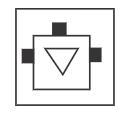 Hence, the third option is correct.
Hence, the third option is correct.
2. According to the given figures –
1. The rectangle is rotated by 90° in the clockwise direction.
2. Two arrows are rotated by 90° in the clockwise direction.
So, following the above pattern, the required figure will be as follows –
Therefore, the figure in the second option is the required figure. Hence, the second option is correct.
3. Since the rotation is restricted. So, the embedded figure will have the same orientation as the main figure. By comparison of the question figure with all the option figures, it is evident that the given question figure is embedded only in the third option figure.
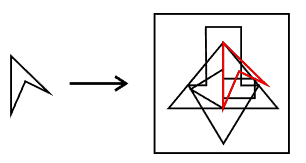
Hence, the third option is correct.
3. Since the rotation is restricted. So, the embedded figure will have the same orientation as the main figure. By comparison of the question figure with all the option figures, it is evident that the given question figure is embedded only in the fourth option figure.
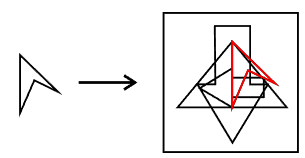
Hence, the fourth option is correct.
4. Given:
A has an exam on Wednesday. Only one person has an exam between A and B. D has an exam on the day immediately before B. Only one person has an exam between F and B. G’s exam is on one of the days before A but on one of the days after C.
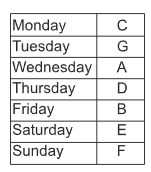
From the final arrangement, G has the exam on Tuesday. Hence, the second option is correct.
5. Given:
J, K, and L sit facing north, and F, G, and H sit facing towards south.
(I) H faces K; L faces an immediate neighbour of H.
(II) G sits at one of the extreme ends of the row; J sits to the immediate left of L.
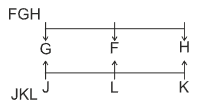
From the final seating arrangement, J faces G. This can be concluded using both statements together. Hence, the first option is correct.
6. Given:
(i) T is sitting exactly in the middle of the row.

(ii) Q is sitting to the immediate right and immediate left of P and T, respectively. S is not sitting at the extreme end.

From the final seating arrangement, Q is sitting third to the left of R. Hence, the second option is correct.
7. Given:
CRUST is written as 201921183
BLAME is written as 5131122
Position values of letters is arranged in the reverse order to get the code
Position values of letters of CRUST; C → 3; R → 18; S → 19; T → 20
On reversing the numbers the code will be ⇒ 201921183
Position values of letters of BLAME; B → 2; L → 12; A → 1; M → 13; E → 5
On reversing the numbers the code will be ⇒ 5131122
Likewise, position values of the letters of PLASTIC are: P → 16; L → 12; A → 1; S → 19; T → 20; I → 9; C → 3
On reversing the numbers the code will be ⇒ 39201911216
Thus, PLASTIC is coded as 39201911216. Hence, the fourth option is correct.
8. Given:
LAMB : DPEQ :: MOTH : JWSR :: NERD : ?
Like, LAMB→L + 5 = Q; A + 4 = E; M + 3 = P; B + 2 = D→QEPD
Now, reverse the order of the letters obtained, we get→DPEQ
So, LAMB is related to DPEQ.
MOTH→M + 5 = R; O + 4 = S; T + 3 = W; H + 2 = J→RSWJ
Now, reverse the order of the letters obtained, we get→JWSR
So, MOTH is related to JWSR.
Similarly, for NERD→N + 5 = S; E + 4 = I; R + 3 = U; D + 2 = F→SIUF
Now, reverse the order of the letters obtained, we get→FUIS
So, NERD is related to FUIS. Hence, the fourth option is correct.
9. Given:
Option 1: WDLF : 23, 4, 12, 6;
Option 2: YBXR : 25, 2, 24, 18;
Option 3: PKSM : 16, 11, 19, 13;
Option 4: IRMT : 9, 18, 13, 20;
In all the options First letter and Second letter are opposite pair of alphabet series, but in first three option, the difference of third letter and fourth letter is 6, but in option 4 the difference is 7;
Hence, the fourth option is correct.
10. Given, the two numbers are in the ratio 6 : 5.
Their HCF is 3.
Let the numbers be 6x and 5x
HCF( 6x, 5x) = x
So, x = 3
Numbers are 18 and 15.
LCM(18, 15) = 90
Hence, the answer is 90.
11. In a 1500 m race, Anil beats Bakul by 150 m.
When Anil completes the race, Bakul covers 1500 – 150 = 1350 m
Bakul beats Charles by 75 m in the 1500 m race.
So in a 1350 m race, Bakul is ahead of Charles by (75 / 1500) * 1350 = 67.5 m
So, Anil beats Charles by (150 + 67.5) = 217.5 m
Hence, the answer is 217.5 m.
12. Volume of conical vessel = (1/3)π(20^2) × 27 cm^3
Volume of cylindrical vessel = π(15^2) × height cm^3
Then, (1/3)π(202) × 27 = π(152) × height
Height of cylindrical vessel = 16 cm
Hence, the correct answer is 16 cm.
13. Correct Option: To implant universal humanism and to wipe out narrow nationalistic feelings
Explanation: Tagore's vision for Santiniketan was to create a place that transcended national and geographical boundaries. He aimed to foster universal humanism and eliminate narrow nationalistic pride, as reflected in his desire to make Santiniketan the starting point for a global union and to plant the "first flag of victorious universal humanism."
14. Correct Option: Self-aggrandizing claims of Indian nationalism, European imperialism, and Soviet communism
Explanation: The passage highlights Tagore's criticisms of various forms of nationalism and imperialism, including Indian nationalism, European colonialism, and Soviet communism. He questioned the self-serving nature of these ideologies, showing concern for how they imposed their beliefs on others and disregarded humanity as a whole.
15. Correct Option: Patriotism and humanity
Explanation: In the statement, Tagore uses "glass" to represent patriotism, which he considers less valuable, and "diamonds" to symbolize humanity, which he holds in higher regard. He emphasizes that humanity should not be compromised for patriotism, as humanity is the more precious ideal.
The following ebooks are designed by Careers360 for an enhanced management exam preparation of the candidates.
eBook Title | Download Links |
3000+ Most Important Words - Vocabulary Builder | |
500+ Most Important Idioms and Phrases | |
300+ Most Important Phrasal Verbs | |
Permutation & Combination - Video Lectures and Practice Questions | |
Mastering DILR Questions with Expert Solutions |
Frequently Asked Questions (FAQs)
The SPJAT MBA exam covers a range of subjects, including logical reasoning, quantitative aptitude, reading comprehension, and general awareness. These sections test a candidate's analytical, problem-solving, and verbal skills, which are essential for succeeding in the MBA program.
The SPJAT MBA exam lasts for about 60 minutes. During this time, candidates are expected to answer a variety of questions that assess their ability to handle the program’s academic rigour and their overall preparedness for the business world.
After the SPJAT MBA exam, shortlisted candidates typically go through further stages of the selection process, which may include a personal interview and a group discussion. The final admission decision is based on a combination of the SPJAT score, performance in these stages, and other factors like work experience and academic background.
On Question asked by student community
Hello,
No, because as per the eligibility of the college you need to have a graduation degree from a recognized university. If you are in the final year of your graduation and the result is awaited, you can still apply. They also consider full-time work experience of 0-3 years. As you are passing your class 12th you cannot get admission in SPJAT College.
Hope this helps you,
Thank you
https://bschool.careers360.com/exams/spjat/amp
Hi,
SPJAT is a special admission entrance exam conducted by S P Jain Global School of Management for admission into its management programs. Hence its scores are not valid anywhere outside the institute. SPIJMR accepts only CAT and GMAT scores.
Hope it helps.
Hi Aspirant,
The various types of questions that come in SPJAT exam are Diagrammatic Reasoning, Logic, IQ, Numeracy, Reading Comprehension.The question consists of four sections with multiple choice questions.The duration is of 1 hours in online mode.
Hope it helps!!
hi,
spjat exams the entrance test for mba admission in sp jain global school of management. the application process and exam happens in 3 rounds. the round 3 deadline of application was october 24, 2019. round 3 admission process is going on. as you dont appear in exam you can not get admission. you need to wait for next year. you can register and appear for test when it will come.
Among top 100 Universities Globally in the Times Higher Education (THE) Interdisciplinary Science Rankings 2026
Partnerships with diverse assortment of global organizations and industry leaders | Industry-driven curriculum
B.Sc (Hons) Admissions 2026 Now Open | Ranked Among the Top 100 Universities in the World by QS World University Rankings 2025
BBA | BBA (Hons.) | BBA+ MBA (Integrated) | AACSB, Business Graduates Association, AMDISA Member | Merit-Based Scholarships | Application Deadline: 20th Jan'26
#36 in NIRF, NAAC ‘A’ Grade | 100% Placement, up to 30% meritorious scholarships
Recognized as Category-1 Deemed to be University by UGC | 41,000 + Alumni Imprints Globally | Students from over 20+ countries